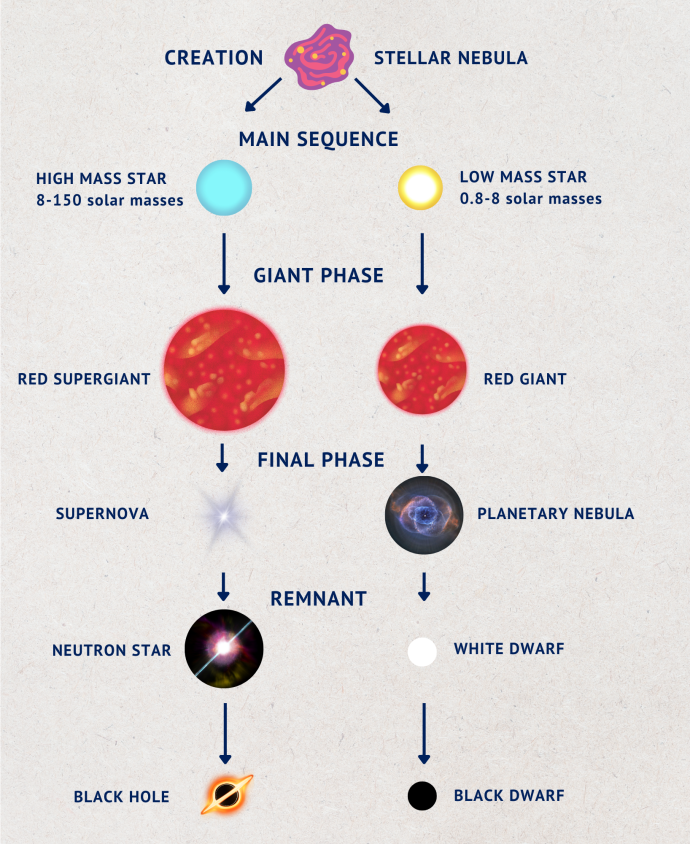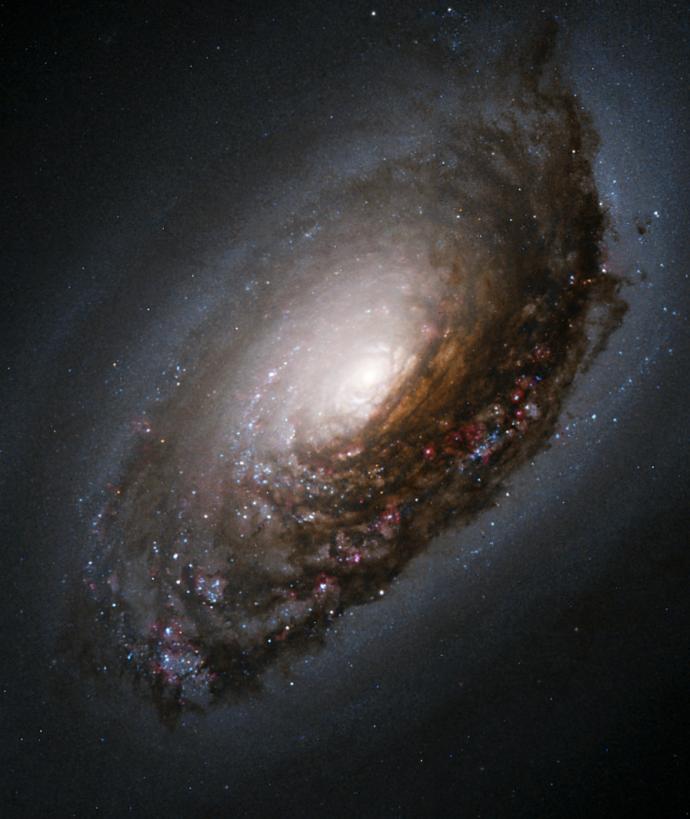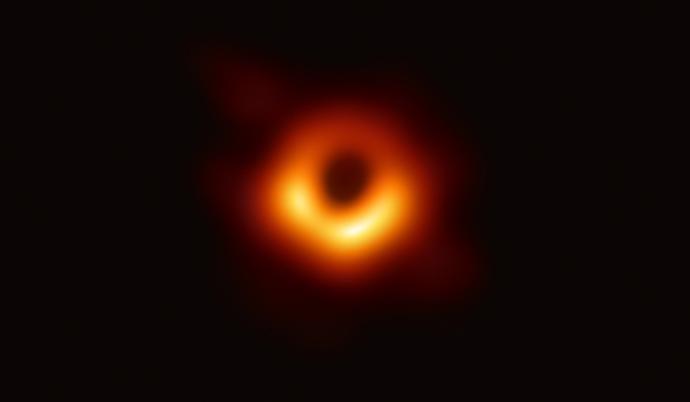Stellar Evolution
All stars form in nebulae, huge clouds of gas and dust.
Though they shine for thousands of years, stars do not last forever. The changes that occur in a star over time and the final stage of its life depends on a star's size.

Galaxies
A galaxy is a large collection of stars, dust and gas. They are surrounded by dark matter, and are held together by gravity.

Blackholes
Black holes are very strange objects. They are made during supernova explosions. These take place when very massive stars come to the end of their lives.

Tana Joseph
Early Life
Tana grew up in Cape Town, South Africa as the daughter of two science teachers. When she was 11 years old, the newspaper printed images from the Hubble Space Telescope on their front page. The pictures inspired Tana to become an astronomer. She went on to study physics and astronomy at university. After receiving a scholarship, she gained her PhD in the UK in 2013.
Year born: 1984
Research Areas: Extragalactic X-ray Binaries, Radio Astronomy
"Science isn’t done until it is communicated."
Samuel Okoye
Early Life
Samuel was born in Umuahia, Nigeria. His father died when he was ten years old. Samuel won a scholarship to study physics at University College in Ibadan, Nigeria. The university was linked to the University of London, UK. He got a paid fellowship to study for his PhD in astrophysics at the University of Cambridge, UK.
Year born: 1939
Research Areas: Radio Astronomy, Galaxies, Crab Nebula
Wanda Díaz-Merced
Early Life
Wanda was born in Gurabo, Puerto Rico. She used to play games, pretending to fly a spacecraft to another galaxy. Wanda won a prize at a school science fair. This experience made her feel like she could pursue a career in science.
Wanda started to lose her sight when she was a teenager. She lost her sight completely while studying for a degree in physics at the University of Puerto Rico. Wanda decided to keep studying at university, although it was difficult. She repeated classes until she got her degree. It took her six years.
Research Areas: Sonification, Black Holes
"I have to study, study, study. I am very determined. If I can do it [science], anyone can."
Subrahmanyan Chandrasekhar
Early Life
Subrahmanyan Chandrasekhar (known as Chandra) grew up in Lorhre, British India (now Pakistan). Chandra came from an academic family. His uncle was a physicist and Nobel Laureate and his mother loved learning. She encouraged young Chandra to be curious. His mother and father taught him at home until he was 12. Chandra got a BSc in physics in 1930 from Presidency College, Madras. He then won a scholarship to study for a postgraduate degree at Trinity College, University of Cambridge, UK. He received a PhD in 1933.
Year born: 1910
Research Areas: Stellar Evolution, Black Holes
"My motive has not been to solve a single problem, but to acquire a perspective of an entire area"
